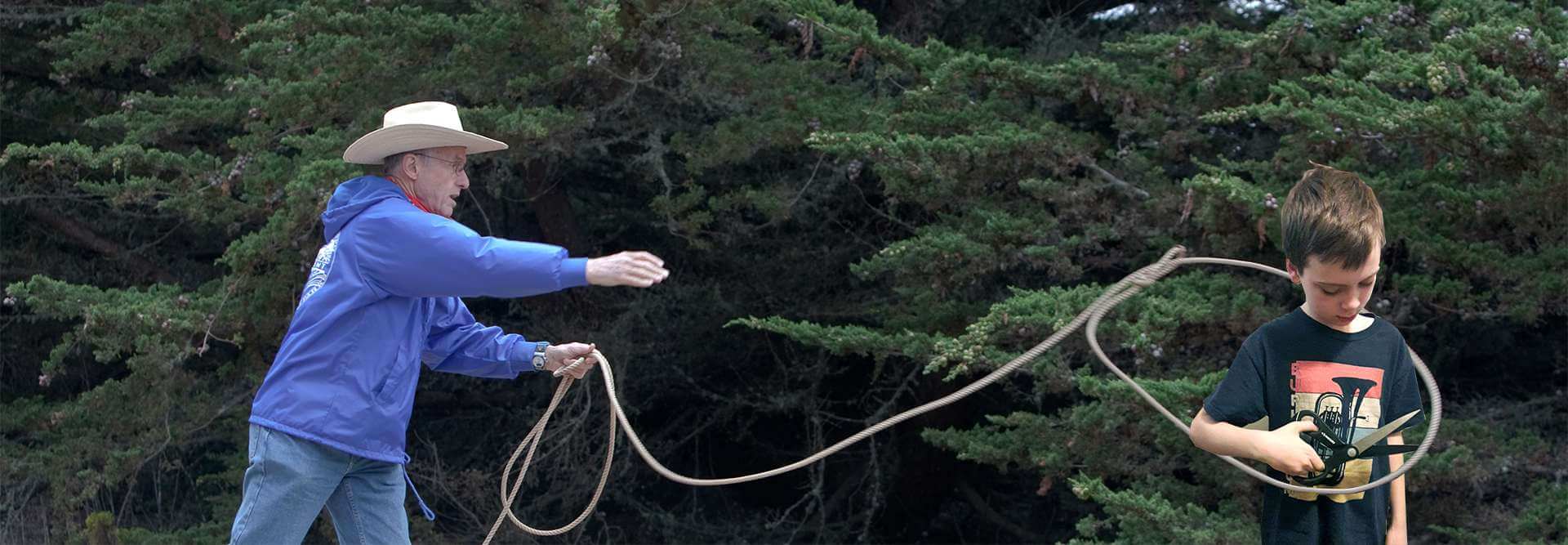At the heart of every parent lies the question:
“What if my children fail?”
And silently following it, another, more pernicious one:
“What if it’s my fault?”
The first question displays a healthy concern for a loved one. When your spouse interviews for a new job, you want them to succeed. When your friend struggles with depression, you want them to pull through.
You support these people because you love them — but if they fail, you don’t think it’s your fault.
Yet this is what parents do. You imagine that we have such an influence on your child’s life that any failure on their part is a failure on your part. If they don’t “succeed”, it’s because you did too little to prepare, shape, support, or nurture them.
For parents considering Self-Directed Education, these questions hold immense weight, because every time you give your child more trust and autonomy, you expose them to more potential failure. What if they fall behind? What if they never find their passion? What if they can’t get into college? What if they never develop any employable skills? And what if it’s all your fault?
But what if it weren’t all your fault?
What if your child’s destiny were significantly out of your hands?
What if you loved and supported your child — as you would a spouse or a dear friend — but did not consider yourself essential to their long-term success or character development?
In this alternate universe, would you find it easier to accept your child for who they are? To be less controlling? To consider all educational options, not just the “successful” ones?
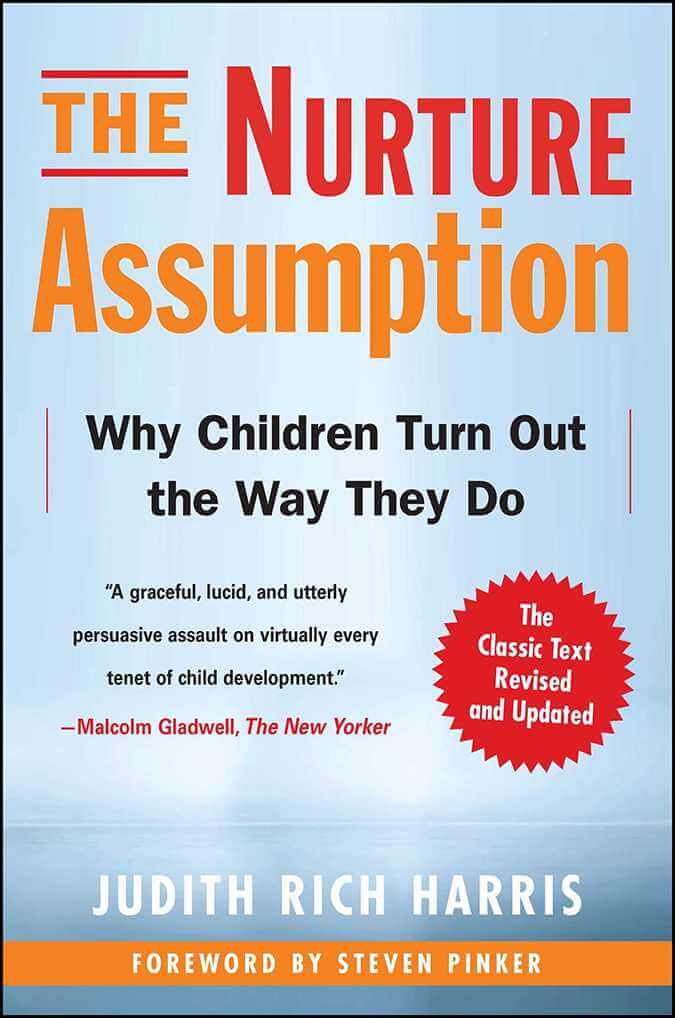
This is what author Judith Rich Harris forces us to consider in her groundbreaking book, The Nurture Assumption (Free Press, 2009).
Harris’ thesis is simple and powerful: that parents don’t shape their kids nearly as much as assumed. While parents still matter, they can’t be held responsible for a child’s long-run outcomes or personality traits, which are much more influenced by genetics and peer groups.
If Harris is right, then much of parental worrying, anxiety, and guilt is misplaced. If you’re not in control of how your kid turns out, then you cannot be held responsible. You can love and support your child without the nagging idea that you must also mold them — because you can’t.
In this article, the second in my Self-Directed Bookworm series (here’s the first), I summarize The Nurture Assumption and share its implications for parents who are considering self-directed paths for their children but feel afraid that they’ll “ruin” them in the process.
Get ready for a wild ride through behavioral genetics, socialization research, language development, and cross-cultural child-rearing. The Nurture Assumption will rock your world, and this article only conveys a fraction of the book’s genius. Buy the book or borrow it from your local library for the full effect.
The Birth of an Academic Rebel
Here’s an easy recipe for pissing off a lot of people: tell parents that they don’t have much effect on how their kids turn out.
This is exactly what Judith Rich Harris — a grandmother, psychology researcher, and textbook author — managed to accomplish.
Harris was pursuing a Ph.D. in psychology at Harvard when chronic health issues forced her to leave with only a Master’s degree. She became a stay-at-home writer of college-level psychology textbooks.
During this time she believed and promoted the standard narratives and most popular evidence about child development. “But then I looked at it more closely,” wrote Harris, “and to my considerable surprise it fell apart in my hands.”
Harris quit writing textbooks to do her own research full-time, eventually publishing her findings in Psychological Review — psychology’s most distinguished academic journal — despite the fact that she had no university affiliation or Ph.D. to her name. Three years later, The Nurture Assumption was born, and in 2009 Harris published a second edition of the book that addressed her critics, cited new research, and essentially said: No one’s proven me wrong yet.
I found Harris’ personal story endearing — both for her audacity and her modeling of self-directed learning — but what really won me over was her humor, humility, and deep respect for evidence-based thinking. The Nurture Assumption is a joy to read even as it challenges some of your most deeply held assumptions.
Questioning the Obvious
Harris begins by admitting the radical nature of her proposal:
How can I question something for which there is so much evidence? You can see it with your own eyes: parents do have effects on their kids. The child who has been beaten looks cowed in the presence of her parents. The child whose parents have been wimpy runs rampant over them. The child whose parents failed to teach morality behaves immorally. The child whose parents don’t think he will accomplish much doesn’t accomplish much.
The direct effects of parenting are obvious! How could they possibly not exist?
Parents who care for their babies in a loving, responsive way tend to have babies who are securely attached to them and who develop into self-confident, friendly children. Parents who talk to their children, listen to them, and read to them tend to have bright children who do well in school. Parents who provide firm — but not rigid — limits for their children have children who are less likely to get into trouble. Parents who treat their children harshly tend to have children who are aggressive or anxious, or both. Parents who behave in an honest, kind, and conscientious manner with their children are likely to have children who also behave in an honest, kind, and conscientious manner.
Harris knew that there was a tremendous amount of research backing these conclusions. But earlier in life, she began noticing that some significant parts of childhood learning and socialization were clearly not affected by parents.
During her time at Harvard, Harris lived above a Russian couple who spoke with distinct accents, but whose children spoke perfect English — even with the same Boston-Cambridge accent as the neighborhood kids. “It puzzled me. Obviously, babies don’t learn to speak on their own; obviously, they learn their language from their parents. . . [but] even the five-year-old was a more competent speaker of English than her mother.”
Another clue came from upper-class British males who spent very little time around their fathers. These boys typically spent their first eight years with nannies and siblings and then got shipped off to boarding school for the next ten years. Upon returning from Eton or Harrow, such a boy possessed an upper-class accent and upper-class demeanor, bearing “a close resemblance to his father — a father who had had virtually nothing to do with bringing him up.”
If children could learn very important things — language and culture — without their parents’ help, was it possible that the rest of their development were shaped without parents? These mysteries led Harris to dive deeper into the research into childhood socialization and language acquisition, where her thesis began to take shape:
There is no question that the adult caregivers play an important role in the baby’s life. It is from these older people that babies learn their first language, have their first experiences in forming and maintaining relationships, and get their first lessons in following rules. . . . Although the learning itself serves a purpose, the content of what children learn may be irrelevant to the world outside their home.
Yes, parents are important. Yes, parents have effects on their kids. But how significant and long-lasting are these effects?
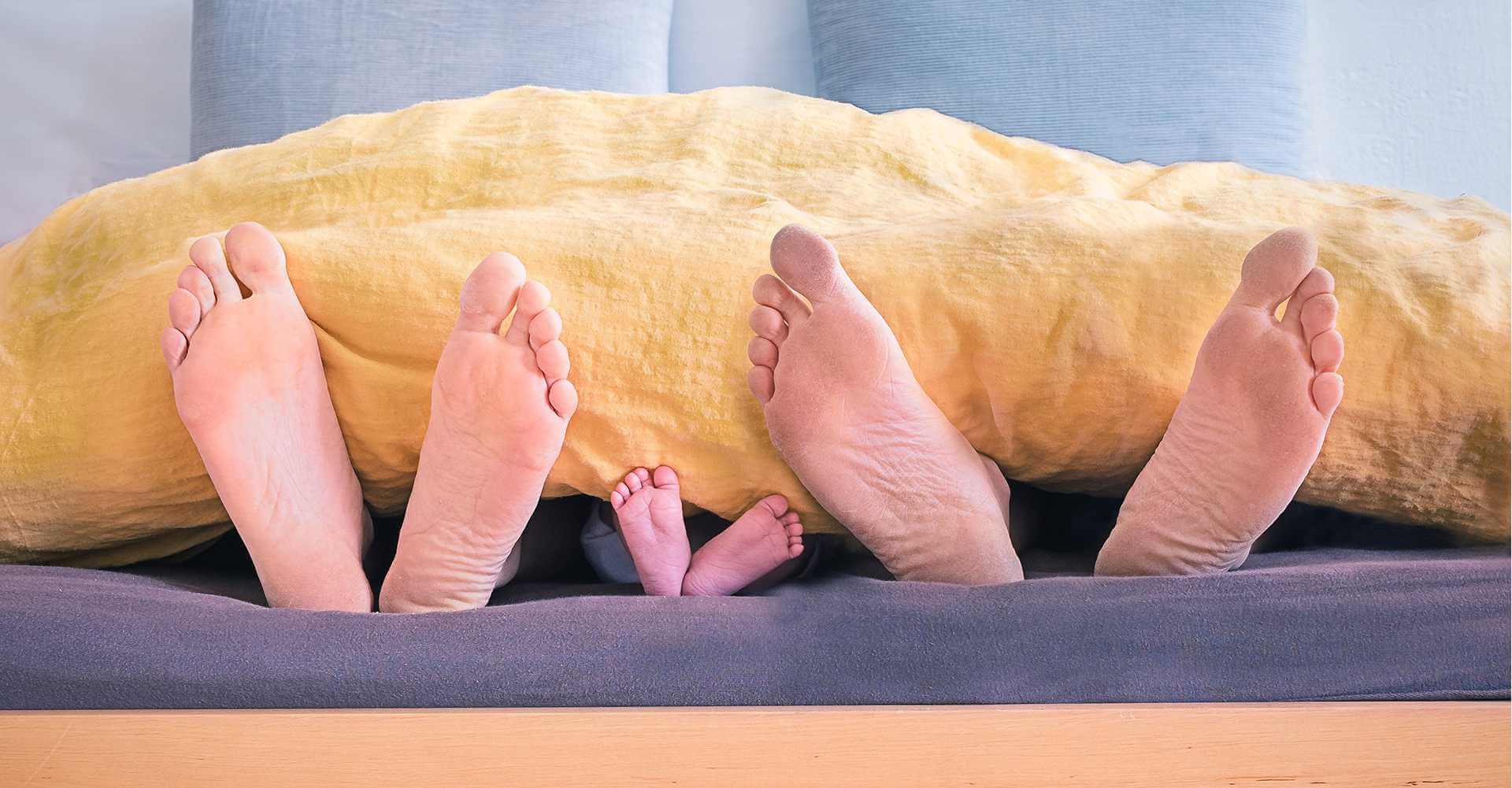
Nature vs. Nurture
In the nature versus nurture debate, Harris informs us, there are two warring camps of scientists: the behavioral geneticists (nature) and the socialization researchers (nurture). In The Nurture Assumption, Harris mostly focuses her critique on the socialization researchers: picking apart their research, revealing their errors of correlation versus causation.
Despite their shortcomings, Harris sees that the socialization researchers have consistently identified two strong correlations:
Correlation #1: “Parents who do a good job of managing their lives, and who get along well with others, tend to have children who are also good at managing their lives and getting along with others. Parents who have problems managing their lives, their homes, or their personal relationships tend to have children who also have problems.”
Correlation #2: “Children who are treated with affection and respect tend to do better at managing their lives and their personal relationships than children who are treated harshly.”
Most people assume that these effects are causal — i.e., that “the children of pleasant and competent people grow up to be pleasant and competent people because of what they learned at home and how they were treated by their parents.” But, Harris challenges us, what if there’s another way to explain these phenomena?
Socialization researchers typically compare children’s behaviors to their parent’s child-rearing styles. But what really is a “child-rearing style”, Harris asks? Do parents actually rear their children consistently?
If child-rearing style were a stable characteristic like eye color, that would be one thing; but “the way a parent acts toward a particular child depends on the child’s age, physical appearance, current behavior, past behavior, intelligence, and state of health. Parents tailor their child-rearing style to the individual child... [it’s] not something a parent does to a child: it is something the parent and the child do together.”
In other words, we treat our children the way we do largely because of who the child already is:
[As] most parents realize shortly after the birth of their second child, children come into this world already different from each other. Their parents treat them differently because of their different characteristics. A fearful child is reassured; a bold one is cautioned. A smiley baby is kissed and played with; an unresponsive one is fed, diapered, and put in its crib. The effects the socialization researchers are interested in are parent-to-child effects: the parent has an effect on the child. There are also effects that go in the opposite direction: the child has an effect on the parent.
[Correlation #2 says] that children who are hugged are more likely to be nice, children who are spanked are more likely to be unpleasant. Turn that statement around and you get one that is equally plausible: nice children are more likely to be hugged, unpleasant children are more likely to be spanked. Do the hugs cause the children’s niceness, or is the children’s niceness the reason why they are hugged, or are both true? Do spankings make children unpleasant, or are parents more likely to lose their temper with unpleasant children, or are both true? In the standard socialization study, there is no way to distinguish these alternative explanations, no way to tell the causes from the effects.
Harris beckons us to consider an alternative narrative. Could it be that competent and cordial kids act the way they do “because of the competence and cordiality genes they inherited from their competent, cordial parents?”
Everyone accepts that tall parents are more likely to produce tall children. Genetics clearly matter. The problem is that parents and children are biological relatives and housemates. The parents provide the genes and the environment. So when a child turns out a certain way, there’s usually no way to distinguish which is responsible: nature or nurture.
This is why researchers go outside of normal families to study special cases like adoptees and twins. For example, by comparing fraternal twins (those who share about 50 percent of their genes), identical twins (those with the same genes), and adopted siblings (who are biologically unrelated), researchers can hold the family environment constant in order to directly observe the effects of genes.
In the 1980s, behavioral geneticists discovered that adopted children growing up in the same home were not alike in personality, and even the personalities of biological siblings were poorly correlated. That meant that parents’ effects on their kids’ personalities were either non-existent or too random to be meaningful. Summarizing the results of large-scale studies, Harris reports:
If the parents work or don’t work, read or don’t read, drink or don’t drink, fight or don’t fight, stay married or don’t stay married — all these “must be essentially the same for all children in a family,” and therefore all appear to have “very little impact” on the children. Similarly, if the physical environment of the home is an apartment or a farmhouse, spacious or crowded, messy or tidy, full of art supplies and tofu or full of auto parts and Twinkies — all these, too, “must be essentially the same for all children in a family,” and therefore appear to have “very little impact.”
No one wanted to believe this research, of course — because we all intuitively feel that our parents must affect how we turn out. But the research that would have proven this, by isolating the parental environment — like birth order effects and parenting styles — have consistently failed to do so.
According to Harris, study after study has failed to show significant effects of various parental lifestyle choices: of mothers choosing to work instead of stay at home; of daycares; of divorced families; of same-sex parents; of being a single child.
In a nutshell, while the two big correlations identified by socialization experts are certainly true, the likely culprit is not the decisions our parents make: it’s the genes they’ve passed on to us.
But Harris is not a genetic purist: she acknowledges and agrees with the long-standing scientific consensus that nature and nurture are equally responsible — approximately 50/50 — for shaping a young person’s long-term character development and major life outcomes.
Yes, nurture exists. A child’s environment matters. But we’re wrong to assume that it’s the parental environment that matters most.
Power to the Peer Group
Of all the “crises” in education that we’re told about, why is there never a crisis of learning to speak?
How do children across the world — sometimes living in dire poverty, sometimes without parents or schoolteachers — manage to learn their native language?
Throughout The Nurture Assumption, Harris points to language acquisition to illustrate how learning and child-shaping can happen rapidly, automatically, and independently of parents:
Parents do not have to teach their children the language of their community; in fact — hard as it may be for you to accept this — they do not have to teach their children any language at all. The language lessons we give our infants and toddlers are a peculiarity of our culture. In parts of the world where people still live in traditional ways, no lessons are given and parents generally do very little conversing with their babies and toddlers — they consider learning the language the child’s job, not the parents’. . . . Compared to American toddlers, the two-year-olds in these societies appear retarded in their language development, but the end result is the same: all the children eventually become competent speakers of their language.
Consider how the children of first-generation immigrants learn their new country’s language with shocking speed.
Consider how the parents of deaf children typically cannot instruct their children in signing and deaf culture, yet virtually all deaf children become rapidly proficient in these areas.
Harris contends that at the root of these phenomena is the fact that children and adults live in two different worlds — and children’s loyalties ultimately fall with their peers.
Because children so desperately want to fit in, seem “normal”, and feel like self-sufficient members of their own world, they will go to extreme measures to keep the worlds of parents and peers separate:
Child abuse often goes undetected because children don’t like to talk about it when they’re outside their home. They don’t want anyone to know that their home is different — that their stepmother beats them and makes them scrub the floor. Conversely, school-age children often fail to tell their parents if they’ve been victims of bullying on the playground. I was a social outcast for four years of my childhood — none of my classmates would talk to me — and my parents never knew about it.
Harris doesn’t claim that this is a recent phenomenon or caused by the institution of school; rather, we’re hard-wired for it. Humans evolved for millions of years in small groups and developed a natural sense of xenophobia. “Us vs. them” is simply how humans operate.
Harris reminds us of the Robbers Cave Experiment, a 1954 study in which 22 eleven-year-olds who didn’t know each other — all white, Protestant, and deliberately chosen to be as alike as possible — were sent to a 3-week summer camp. The researchers, who doubled as the camp counselors, put the boys into two groups (the “Rattlers” and the “Eagles”) and had them share the camp.
The researchers’ plan was to let the groups think they were alone for a week, and then put them in competition with each other. But the boys were way ahead of the game: they discovered each other, began highlighting group differences, and provoking each other. Within a short time the experiment took on a life of its own, progressing from verbal threats towards an all-out war that the researchers had to break up.
The experiment vividly demonstrated how, even without differences in race, religion, age, or culture, humans think in terms of group identity. Even when five strangers get stuck in an elevator for half an hour, they become a group.
When given the opportunity, humans form groups based on similarity. As early as nursery school, Harris reminds us, children are attracted to others like themselves. “In grade school, children who are good friends are likely to be of the same age, sex, and race, and to have similar interests and values.”
Yes, children associate with those who aren’t similar to them — but only when the social group is small. Once the group becomes big enough, children automatically segregate themselves into same-age, same-sex, same-race, and same-interest subgroups. This happens in both traditional societies and modern societies — much to the chagrin of progressive parents shocked by the regressive attitudes of the children they’ve so carefully reared with modern values.
“Socialization” is not something that’s done to children, Harris argues, it’s something children do to themselves. Whether we call it peer pressure (most relevant in childhood) or the natural desire to conform (most relevant in adolescence), human groupishness is real and powerful. We want to be more like our own group members and less like other group members. And all children intuitively make the distinction between their world — the world of children — and the world of parents.
Here we arrive at the heart of Harris’s argument. No matter whether we’re talking about early or modern societies, children consistently value, imitate, and learn from their peer group. While parents form important one-on-one relationships with their children — relationships that hopefully last a lifetime — their influence simply cannot compete with the long-run power of the peer group.
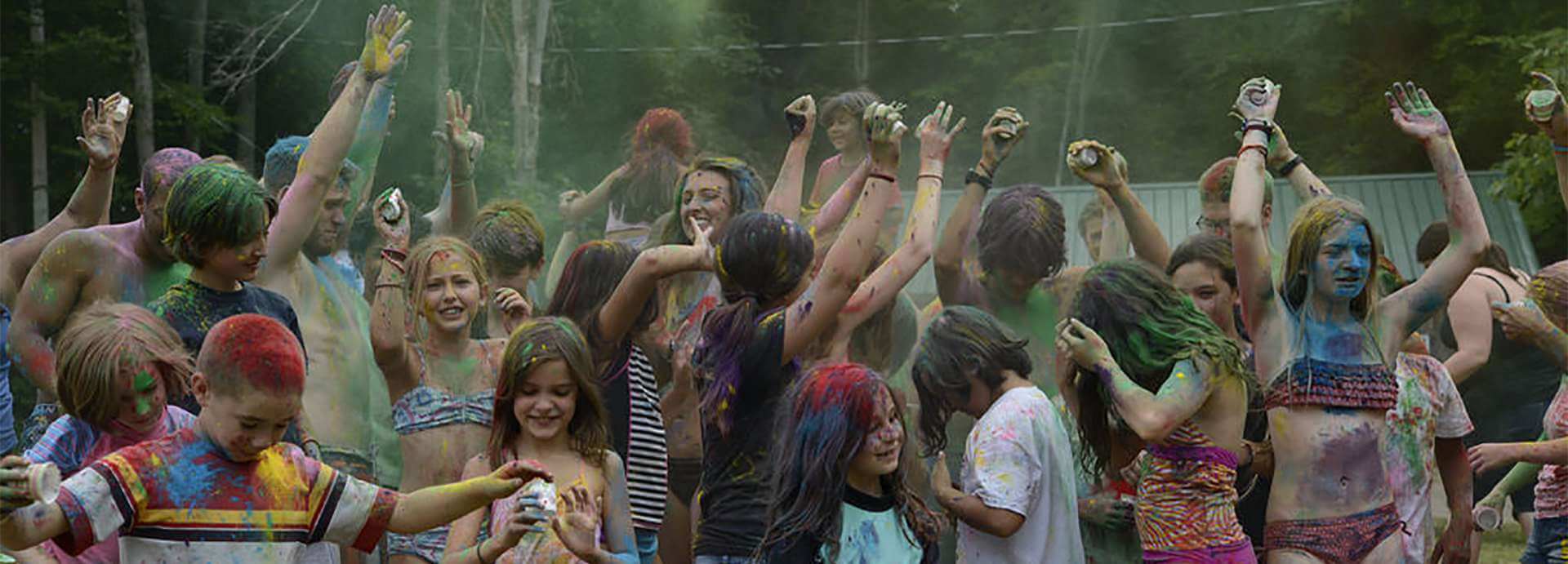
School Groups and Unschool Groups
So where does this peer-based cultural transmission and character-shaping take place? For most kids, it’s school.
School’s where those second-generation immigrant kids learn the language that their parents could never teach them. That’s where deaf children learn deaf culture. And it’s where the children of British aristocrats learn to act like proper aristocrats.
In the twentieth century it was typical for upper-class British boys to spend the first 8 years in the care of nannies, the next decade in exclusive boarding schools, and very little time actually with their fathers — yet at age 18 they’d come home speaking and acting just like those upper-class father. Harris breaks it down for us:
The boys who went to those fancy boarding schools didn’t get their aristocratic accents from their nannies, who tended to be of lower-middle-class origins, or from their governesses, who might have been Scottish or French. They didn’t get their accents from their brief and impersonal interactions with their parents. They didn’t get them from their teachers, who were unlikely to be of the manor born. They got them from each other. The accents were passed down from the older boys to the younger ones, generation after generation, at schools like Eton, Harrow, and Rugby. Other aspects of upper-class British culture — the stiff upper lip, the stern sense of moral rectitude, the refined aesthetic tastes — were passed along in the same way. These boys didn’t get their culture from their father’s little lectures on fortitude and fitness. They got it in the same place their father got his.
Of course, genetics accounts for much of the father-son similarity, as Harris has already informed us. The other half comes from the peer group at school.
Sir Anthony Glyn, one such Brit raised in this fashion, reflected candidly on this process:
“The object of [school],” Glyn reported, “is not to learn anything useful or indeed to learn anything at all. It is to have the character and mind trained, to have the right social image, and to make the right friends.”
In other words, Glyn’s school experience was about signaling, not skill-building — just as it is today.
Schools are obviously places of cultural transmission. What does this mean for young people who go to tiny schools, highly alternative schools, or no school at all?
Harris’ message seems to be: No matter the nature of your kids’ peer group, it will profoundly shape them. The kids who surround your kids matter — so choose them well. And to a lesser but still significant effect, your kids teachers matter, because they have the power to shape entire groups of kids. So choose them well, too.
The Nurture Assumption offers just a few concrete pieces of the advices, and this is one of them. Know who your kids spend their time around. Know their character and culture. While you may not be able to directly instill values in your kids — because your membership in the parent club will always make you persona non grata — you can certainly choose your kid’s neighborhood, their play buddies, and their school group (or homeschool group)...at least until they’re teenagers and begin socializing more independently.
In this advice I detect a stamp of approval for alternative schools, self-directed learning centers, homeschooling co-ops, and any other small, transparent learning community where you stand a good chance of knowing what kind of people — both peers and non-parental adults — are shaping your children. Fortunately, such communities can be found across North America (and increasingly across the world), products of our the golden age of Self-Directed Education.
Damn You, YouTube
While connecting your kid to the right peer communities is a powerful first step, Harris quickly brings us down to earth again by reminding us that every child is still a member of the largest peer group: youth culture. And today, that culture is more powerful than ever before.
Unless you’ve gone Luddite, your kids are online. The same goes for their peers in your wonderful little homeschool co-op, alternative school, or self-directed learning center. Which means they’re all getting their culture from the same place that school kids are getting theirs: YouTube.
Writing from the perspective of the nineties and early 2000s, Harris’ arguments mostly center around television — but one can easily generalize her arguments for the YouTube generation:
Preventing an individual child from watching television would not protect that child against its influence, because television’s impact is not on the individual child — it is on the group. Like all other aspects of the culture, what is portrayed on the television screen will have long-term effects on an individual’s behavior only if it is incorporated into the culture of the peer group. It often is.
In my own time working with teen homeschoolers and unschoolers — over a dozen years and 20,000 contact hours by my latest count — I’ve observed how down-to-earth, self-aware, and mature they are. But in most other ways, they’re just teenagers. They follow the trends of their global peer group. They worry about the same things that school teens worry about. They’re immersed in the same youth culture as school teens: Snapchat, Instagram, Tumblr, Reddit, and more traditional media. All this ensures that groups of unschooled teens never become so different from schooled teens.
If Harris’ theory about socialization is right, then parents wishing to tightly control their kids social environment are bound to be disappointed. Unless you raise them totally off-grid, only allow them to read a carefully curated selection of books, and surround them only with similarly sheltered peers — essentially, only if you form a cult — might your kids escape the effects of global youth culture.
What Parents Can Do
Harris moves on to tackle specific issues concerning teenagers, gender differences, and dysfunctional families. She holds fast to her thesis, marshaling massive evidence for the influence of peer groups and genetics over parents and home environment.
It’s not that parents and home life don’t matter, she constantly reminds us — they obviously do matter in the short-run, because kids do react to their parents’ actions and expectations — but rather that life at home is just a temporary stop in the child’s journey, and the parents are temporary influencers. The direct effects of parenting that you believe you observe in your kids are either (1) simply your genes expressing themselves or (2) are temporary behavioral adjustments made by children, soon to be cast off when they enter the peer world “as easily as the dorky sweater their mother made them wear.”
So what can parents do, beyond carefully choosing a peer group (as discussed above)? Harris ends her book with an entire chapter dedicated to this question.
Some things that parents do — like teaching language to their young children — don’t hurt. That means that the child “does not have to learn it all over again in order to converse with her peers — assuming, of course, that her peers speak English.” Harris continues:
The same is true for other behaviors, skills, and knowledge. Children bring to the peer group much of what they learned at home, and if it agrees with what the other kids learned at home they are likely to retain it. Children also learn things at home that they do not bring to the peer group, and these may be retained even if they are different from what their peers learned. Some things just don’t come up in the context of the peer group. This is true nowadays of religion. Unless they attend a religious school, practicing a religion is something children don’t do with their peers: they do it with their parents. That is why parents still have some power to give their kids their religion. Parents have some power to impart any aspect of their culture that involves things done in the home; cooking is a good example. Anything learned at home and kept at home — not scrutinized by the peer group — may be passed on from parents to their kids.
Religion, cooking, political beliefs, musical talents, and career plans: Harris concedes that parents do influence their kids in these areas. But only because these are essentially interests and hobbies, not character traits. If you had a personal friend living with you for 18 years, their favorite meals, political beliefs, and career plans might rub off on you, too.
If your kid is getting bullied or falling in with the wrong crowd, you can move. You can switch schools. You can homeschool. These actions matter, because they affect the peer group.
You can help your kid from being typecast in negative ways by their peer group. You can help them look as normal and attractive as possible:
“Normal” means dressing the child in the same kind of clothing the other kids are wearing. “Attractive” means things like dermatologists for the kid with bad skin and orthodontists for the one whose teeth came in crooked. And, if you can afford it or your health insurance will cover it, plastic surgery for any serious sort of facial anomaly. Children don’t want to be different, and for good reason: oddness is not considered a virtue in the peer group. Even giving a kid a weird or silly name can put him at a disadvantage.
In Self-Directed Education circles where “being yourself” is holy mantra, such “conformist” concessions can be looked down upon. But Harris encourages us to remember what it is actually like to be a child: how powerfully we desire to fit in with our peers. Be kind to your children, Harris suggests, and don’t give them outlandish names, clothing, or grooming. Give them what they need to feel secure, even when that thing feels highly conformist.
Harris offers just a few small pieces of common-sense advice. There’s not much in the way of traditional “do this, not that” parenting guidance. But her final and most significant message is yet to come.
Saving the Parent-Child Relationship
My favorite quote from The Nurture Assumption introduces Harris’ approach to thinking about parent-child relationships:
People sometimes ask me, “So you mean it doesn’t matter how I treat my child?” They never ask, “So you mean it doesn’t matter how I treat my husband?” or “So you mean it doesn’t matter how I treat my wife?” And yet the situation is similar. I don’t expect that the way I act toward my husband today is going to determine what kind of person he will be tomorrow. I do expect, however, that it will affect how happy he is to live with me and whether we will remain good friends.
While a spouse and a child are clearly not the same — a spouse has a similar level of lifetime experience to you, they are voluntarily chosen, and they (hopefully) don’t share your genes — Harris holds up marriage as a better relationship model than one we typically employ as parents.
You can learn things from the person you’re married to. Marriage can change your opinions and influence your choice of a career or a religion. But it doesn’t change your personality, except in temporary, context-dependent ways.
Yes, the parent-child relationship is important. But it’s not terribly different from a relationship with a spouse, sibling, or dear friend. In those relationships we don’t assume that we can (or should) control that person or how they “turn out.” Yet with children, we do.
Implicit in this analysis is a powerful message: Children are their own people, leading their own lives, worthy of basic respect. They are not dolls, chattel, or people through whom we might live our unfulfilled dreams. Just because parents are older, have more experience, and share genes with our children doesn’t give us long-term power or real control over them. That is the attitude that leads to the bullying, condescension, and micromanaging that scars too many parent-child relationships.
But while she calls for relinquishing a sense of control, Harris isn’t onboard with highly permissive parenting (what some call “unparenting”) either:
Parents are meant to be dominant over their children. They are meant to be in charge. But nowadays they are so hesitant about exerting their authority — a hesitancy imposed upon them by the advice-givers — that it is difficult for them to run the home in an effective manner. . . . The experiences of previous generations show that it is possible to rear well-adjusted children without making them feel that they are the center of the universe or that a time-out is the worst thing that could happen to them if they disobey. Parents know better than their children and should not feel diffident about telling them what to do. Parents, too, have a right to a happy and peaceful home life. In traditional societies, parents are not pals. They are not playmates. The idea that parents should have to entertain their children is bizarre to people in these societies. They would fall down laughing if you tried to tell them about “quality time.”
The message again is: Think of the parent-child relationship more like that of a healthy friendship or marriage. Hold them to a normal standards. Be frank and direct with them. Don’t worry about constantly entertaining them or monitoring their emotions. And whenever possible, Harris, says enjoy yourself! “Parents are meant to enjoy parenting. If you are not enjoying it, maybe you’re working too hard.”
In the end, Harris wants to free us from the guilt, anxiety, and fear that plagues so much of modern parenting, largely bred from the “advice-givers” who have convinced us that parenting is a science and you’re responsible for its outcomes:
You’ve followed their advice and where has it got you? They’ve made you feel guilty if you don’t love all your children equally, though it’s not your fault if nature made some kids more lovable than others. They’ve made you feel guilty if you don’t give them enough quality time, though your kids seem to prefer to spend their quality time with their friends. They’ve made you feel guilty if you don’t give your kids two parents, one of each sex, though there is no unambiguous evidence that it matters in the long run. They’ve made you feel guilty if you hit your child, though big hominids have been hitting little ones for millions of years. Worst of all, they’ve made you feel guilty if anything goes wrong with your child. It’s easy to blame parents for everything: they’re sitting ducks. Fair game ever since Freud lit his first cigar.
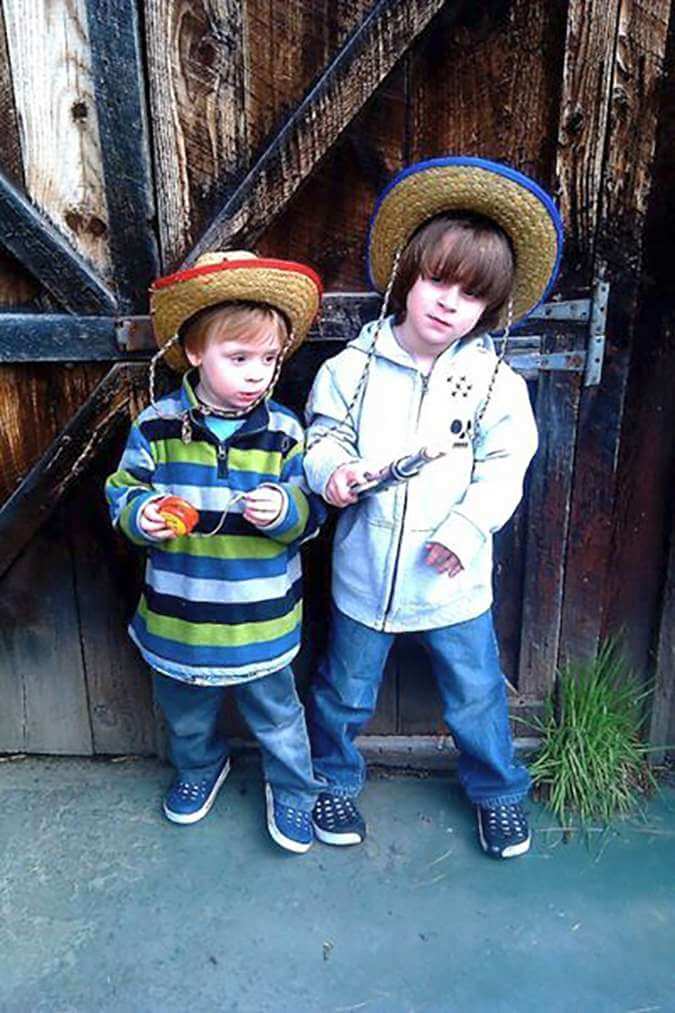
Take care of the basics. Give your kid a home and keep them healthy. Connect them to positive peer groups. Teach them what you can. Build a home life that works for everyone. Try to enjoy the person who your child is. Do your best to build a bond between child and parent that will last for a lifetime. This is what Judith Rich Harris says we can do.
But when it comes to influencing your child’s behavior, personality, attitudes, and knowledge in the long run: stop. Recognize how little impact you have, give up the illusion of control, and relax. We can neither perfect nor ruin our children, Harris says: “They are not yours to perfect or ruin: they belong to tomorrow.”
If you enjoyed this article and feel called to give back to ASDE, here are ways you can support our work:
- Donate money
- Share our content with others! Click one of the buttons above to easily share on Twitter, Facebook, or email.
- Consider becoming a Contributor for Tipping Points
Tipping Points Magazine amplifies the diverse voices within the Self-Directed Education movement. The views expressed in our content belong solely to the author(s). The Alliance for Self-Directed Education disclaims responsibility for any interpretation or application of the information provided. Engage in dialogue by reaching out to the author(s) directly.


